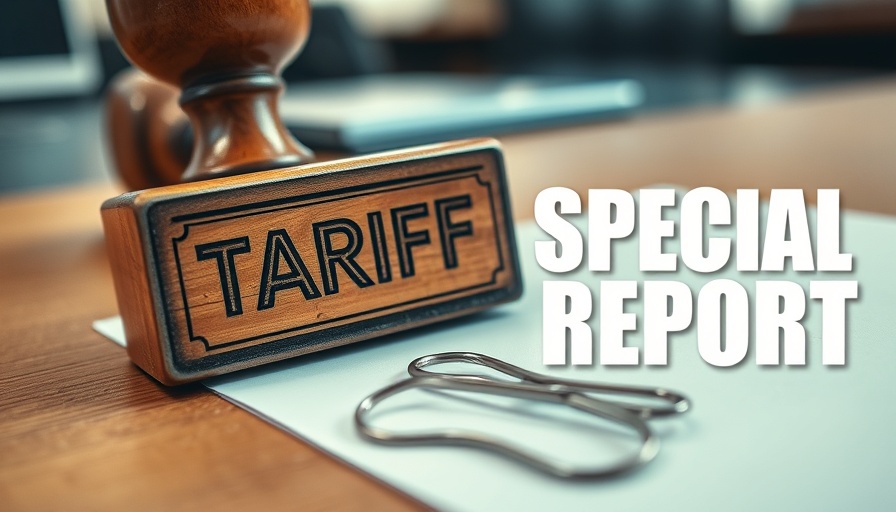
Industry Call to Action: The Potential Role of Tariffs on Medical Devices
The Vision Council has recently urged professionals in the optical industry to voice their concerns regarding proposed tariffs on medical devices to the Department of Commerce. This initiative highlights not only the Council's commitment to its members but also the urgency of participating in dialogue about tariffs that could reshape the industry landscape.
Understanding the Impact of Tariffs on the Optical Market
The potential tariffs, set to take effect on August 1, 2025, could reach as high as 40% on imports from various nations. Such dramatic increases will pressure business models across the optical supply chain, affecting manufacturers, labs, and independent retailers alike. The Vision Council pointedly notes that these tariffs present significant challenges. They will compel industry stakeholders to reassess their global sourcing strategies while managing increased costs that will likely be passed onto consumers.
The Importance of Public Comments
The request for public comments represents an important opportunity for stakeholders to advocate for their interests. Collective feedback can directly influence how tariffs are structured and implemented. Encouraging participation in this process can help shape regulations that either protect domestic industries or hinder their growth.
Real-world Implications for Small Businesses
For many smaller optical retailers, the proposed tariffs could be the difference between profit and loss. With the customer base being exceptionally cost-sensitive, increased tariffs will likely necessitate higher retail prices. This raises concerns over accessibility and the potential for diminished service quality. As the Vision Council details, businesses may need to rethink their pricing structures and inventory management in response to this shifting financial landscape.
A Call for Active Engagement and Insightful Resources
The Vision Council has made additional resources available to its members, including simulations to model financial impacts of the tariffs and real-time updates on policy changes. Utilizing these resources will equip industry professionals to better prepare for the challenges ahead. Understanding the potential costs involved can help businesses navigate these changes more effectively.
Looking Ahead: Possible Future Trends
As we look toward the future, the debate surrounding tariffs on medical devices will likely evolve. The Vision Council's proactive stance indicates that the industry must remain vigilant and engaged with policy changes that could affect its operations. By actively participating in this process, stakeholders can safeguard their interests and contribute to a more equitable market environment.
In summary, as the tariff debate heats up, it’s crucial for optical professionals to get involved. Comments submitted today not only shape the immediate future but also set the stage for long-term changes. Together, the industry has the power to influence outcomes that affect its collective viability.
 Add Row
Add Row  Add
Add 




Write A Comment